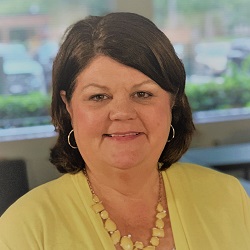Top-Level Takeaways
- Member education and awareness underpin digital strategies at Langley Federal Credit Union and Wright-Patt Credit Union.
- Multiple channels and alerts encourage do-it-yourselfers while maintaining a something-for-everyone approach to member service.
A self-sufficient member is a good thing. Do-it-yourself folks don’t need expensive help, are more likely to be satisfied, and are sticky they are in it for the long run with their favorite financial cooperative. As long as that cooperative is meeting their needs. So, how do credit unions ensure they meet the needs of members?
Two leading cooperatives Langley Federal Credit Union($3.0B, Newport News, VA) and Wright-Patt Credit Union ($4.9B, Beavercreek, OH) have found that technology and education are two key ingredients in creating a corps of self-sufficient member-owners.
We start by educating the member at the time they open an account, says Kim Riley, vice president of service delivery at Wright-Patt, the Buckeye State’s largest cooperative.
Digitally, that involves its Virtual Branch, a contact center operation devoted to online account openers. The team effort includes a variety of touchpoints, including front-line staff, the marketing department, social media, and the website.
We also post articles that educate members on spending, saving, and borrowing to help them prevent overdrafts, Riley says, citing the credit union’s 4 Quick Tricks For Mobile And Online Banking landing page as one example.
A coaching program at Wright-Patt Credit Union teaches members how to be responsible with money while enjoying life. Learn how in A Strategy To Help Members Magnify Their Money only on CreditUnions.com.
Preventing overdrafts, of course, prevents fees, one of the major topics of conversation when members do call in, says Kristi Forehand, assistant vice president for the contact center at Langley.
The other big issues for members of the Virginia credit union: card fraud, disputes, and troubleshooting; online banking help; check hold releases; and account and loan maintenance (primarily balance and deposit) questions. To that list, WPCU’s Riley adds that venerable bugaboo: PIN re-sets.
Lots Of People, Lots Of Channels

WPCU handled 1.18 million calls in person in 2018 and another 2.87 million through its IVR, with the same mix taking place this year, Riley says.
She says they’re in the process of hiring 40 people to join the more than 150 employees that already work in WPCU’s two Member Help Centers contact centers located in Dayton and Columbus, OH and its Personal Experience Center the people inside its fleet of ITMs.
Most of their work is reactive. However, Riley does offer one proactive tip: Communicate scheduled maintenance of mobile and online platforms in advance to cut down on contact center calls.
Langley, meanwhile, averages 52,000 calls a month through its contact center, currently staffed by 64 people at its Hampton Roads headquarters. Forehand says the team breaks down into six team leaders, two dedicated outbound reps, two online membership reps, two online secured messaging reps, and 52 reps who work in the account information, membership, or loan call queue.

Langley introduces a culture of growth and sets an ambitious goal for the end of the decade. Read more in Anatomy Of Langley Federal Credit Union on CreditUnions.com
Keeping The Old, Adding The New
In addition to quality phone conversations, Langley’s best practice list of service channels includes email, secured messaging within online banking, text, and social media.
New tools also are in the offing. Langley is considering adding artificial intelligence (AI) technology that the credit union anticipates would reduce by 40% the number of calls that need to go to a live representative.
This will then allow our representatives to have more in-depth conversations with our members that are focused on building relationships, Forehand says. She says that also would open a new channel, live chat, which it currently doesn’t offer because of security concerns.
Riley at WPCU sees similar value.
Self-service options allow us to efficiently serve members so our partner-employees can focus on helping members with their more complex financial needs, she says.
WPCU continually looks for new channels and methods to improve existing outreach and education, closely following trends in members’ mobile and online banking use, including mobile deposits, to gauge what’s working and how well. The effort is paying off. Riley says 52% of the credit union’s membership now actively use the mobile and online banking channels, and mobile deposits rose from 14% of all deposits in 2016 to 17% so far this year.
This is not a zero-sum game, though.
We do a great job offering self-service tools to members who prefer those channels, Riley says. But we’re still here to help in our member centers [branches] and over the phone. It’s important to have diverse service models that meet the needs and preferences of all our members.
Langley’s Self-Help Fab 4
Kristi Forehand is a 13-year employee at Langley FCU. She took over the credit union’s contact center three years ago after stints as a branch manager, trainer, and sales and service leader. Here, she shares what she considers are the four most effective steps her organization has taken to create self-sufficient members.
- Regular online and mobile banking updates that remind members to access their account wherever and whenever the need arises.
- Account alerts via text message update the member when a deposit is made, when a loan payment is due, and when a balance drops below a certain amount.
- A payment console that allows members to make loan payments from external accounts, eliminating the need to visit a branch or mail a check.
- The Langley Card Manager. The tool allows members to monitor transactions, temporarily block their cards, and set alerts and travel notes. This puts card functionality in members’ hands and helps mitigate fraud by creating members who are more in tune with their own transactions, Forehand says.